
Donate to Innerviews
Since 1994, Innerviews has provided uncompromising, in-depth interviews with musicians across every genre imaginable. And it does that with no trackers, cookies, clickbait, or advertising.
Your donations are welcome to help continue its mission of highlighting incredible music and artists, without any commercial considerations.
Your contributions will be instantly transformed into stories and videos, and cover hosting and web management costs. Importantly, your dollars will help ensure Innerviews remains absolutely free to all visitors, independent of their ability to financially support it.
Please consider making a donation today by using the PayPal QR code below.

Daniel Schell
The Art of Optimality
by Anil Prasad
Copyright © 2025 Anil Prasad.
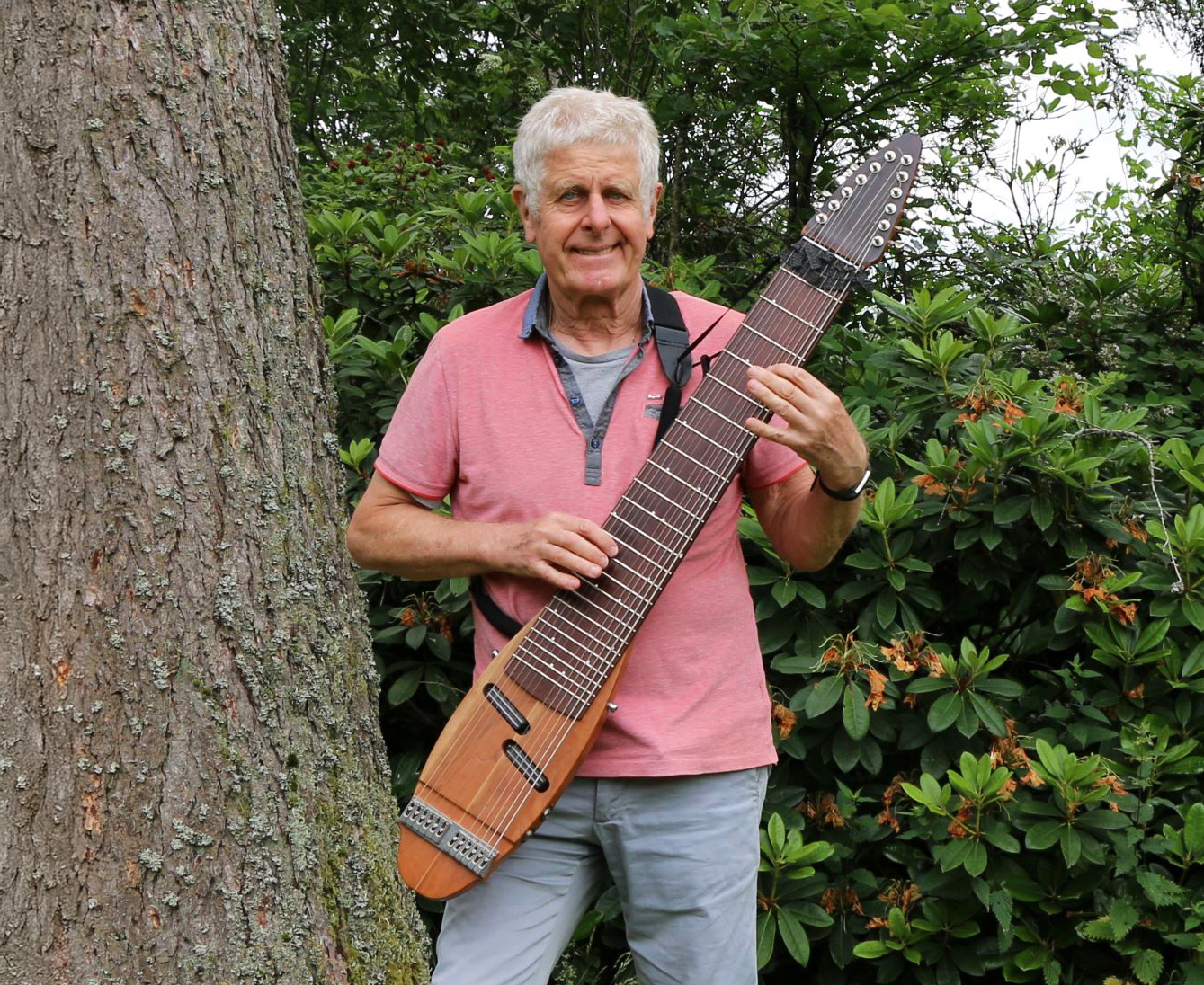 Photo: Clic MusicBridging the organic and mathematic is at the forefront of tap guitarist, flautist, and composer Daniel Schell’s music. Since the late 1960s, the Belgian artist has sought to expand the boundaries of Indian classical music, progressive rock, opera, and minimalism by using advanced mathematical concepts and models, and programming languages, to frame his explorations.
Photo: Clic MusicBridging the organic and mathematic is at the forefront of tap guitarist, flautist, and composer Daniel Schell’s music. Since the late 1960s, the Belgian artist has sought to expand the boundaries of Indian classical music, progressive rock, opera, and minimalism by using advanced mathematical concepts and models, and programming languages, to frame his explorations.
Schell began his career as part of the Belgian art-rock and avant-jazz vanguard, initially through a 1969 student band called the Brussels Art Quintet, and then through his first major group, Classroom, which existed from 1969-1974.
Classroom eventually morphed into the group Cos, which rapidly became one of the most important progressive rock groups in Belgian history. In addition to Schell, the band included luminaries such as multi-instrumentalist Marc Hollander, drummer Philippe Allaert, and bassist Rwandese Mutsari among its ranks.
Cos recorded five albums that incorporated myriad influences, including African music, reggae, jazz, opera, and disco. It achieved the rare feat of balancing complexity and daring, with the soulful and accessible. The majority of its output has been reissued in recent years by the Finders Keepers and Wah Wah labels.
After Cos broke up in 1985, Schell focused on his solo career. He signed to Crammed Discs between 1988-1990, during which he released If Windows They Have and The Secret of BWLCH, backed by his group The Karo Ensemble. The band name refers to Schell’s Karo composition technique. It uses the rules of crystal mineralogy to create optimal intersections between combinations of notes and chords.
If Windows They Have offered kinetic compositions that brought together medieval polyphonics, mathematics, and minimal music. It also used the structure of jewels worn by the ancient Celts as inspiration. The Secret of BWLCH shifted into wildly diverse and eclectic territory that combined chamber music, classical choirs, Hungarian and Indian rhythms, and Italian melodies.
He recorded a third album with The Karo Ensemble titled Gira Girasole in 1994 for the Materiali Sonori label, focused on traditional Italian melodies.
After those releases, Schell immersed himself in the world of opera. He has written eight major works to date, including Alpe della Luna, L’Arbre Roi, Neige de Soleil, Digue, Hygiène de l’Assassin, Les Combustibles, and Le Sabotage Amoureux. He also co-helmed the creation of Oratorio Ishango, an ambitious multimedia production combining African music, jazz, classical music, dance, and storytelling. It has been staged several times in Belgium since debuting in 2001.
The early 2000s also saw Schell establish The Karo Trio, which applies his composition approach to Indian classical music. The group features Schell on MIDI tap-guitar, Wim de Winter on sarangi, and Sandip Banerjee or Jean-François Jones Jacob on tabla and percussion. The Karo Trio uses Indian music as its core framework, and infuses it with electronics and processing, as well as Karo-derived harmonic forms and melodic structures. It has released two albums to date: 2002’s L’or do fou and 2022’s The Key of All Secrets.
Schell’s commitment to this form also extends to the Sangit Academy of Classical Indian Music in Brussels, which he co-founded in 1991. Today, it is established as Belgium’s premiere school for learning about this universe of sound.
"Daniel is a truly remarkable person and musician,” said touch guitarist and composer Markus Reuter, who was Schell’s student during the mid-1990s. “He possesses a joyful, unbreakable spirit, while also being something of a mad scientist. He pushes the boundaries of harmony and transforms conventional triadic theory into something entirely fresh and exhilarating. I love his music for its quirkiness, humor, rich melodies, thrilling harmonic language, and powerful rhythmic drive. With The Karo Ensemble, he created a group sound unlike anything heard before. I'm deeply grateful to call him my teacher, both in composition and during my formative years as a touch guitarist."
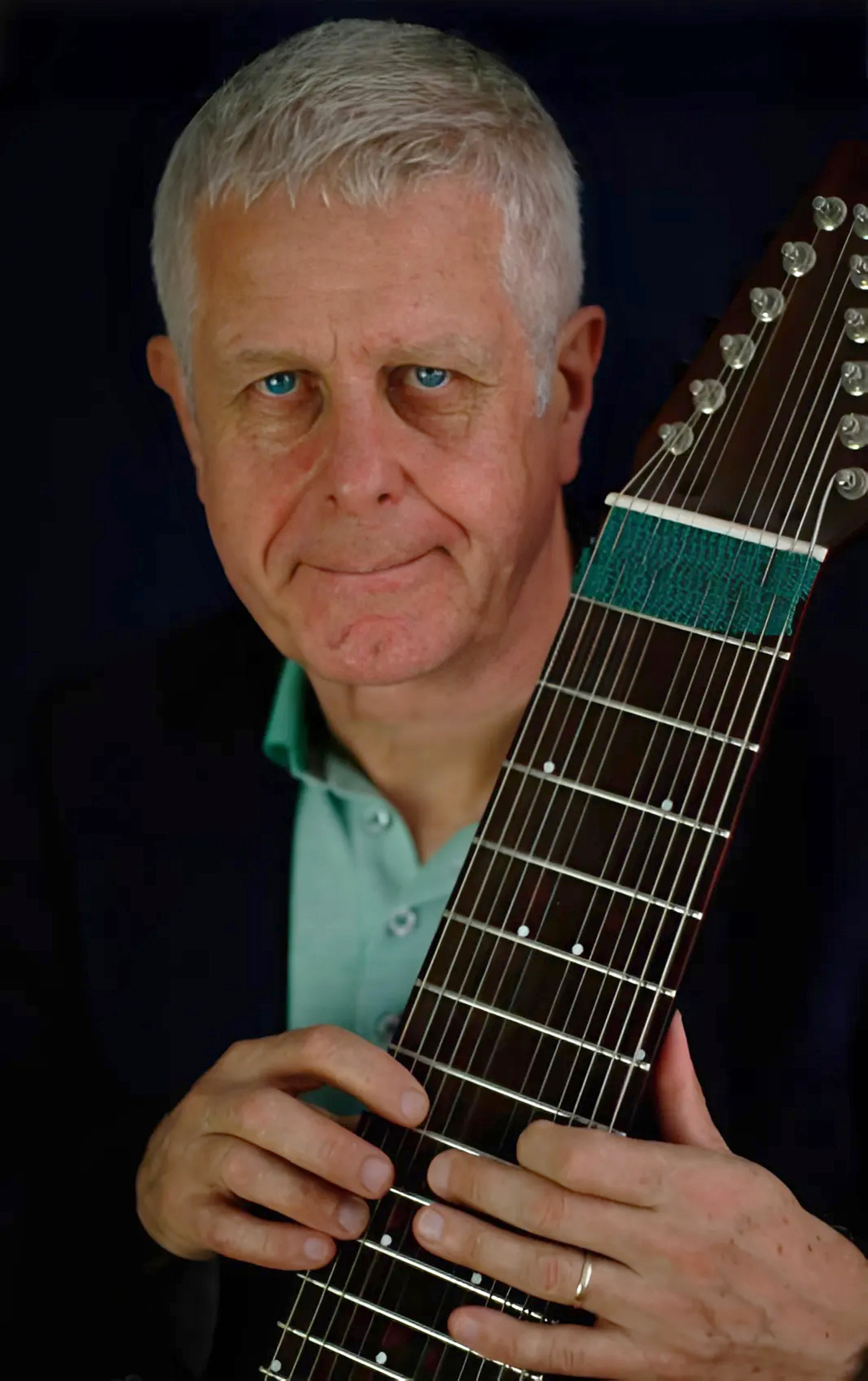 Photo: Constantin Stefanescu
Photo: Constantin Stefanescu
What are your thoughts about the unique value of music during this chaotic period of Western civilization?
I think music is totally central, because it represents a common language. It’s something we have deep in us, and it talks to everybody, across different genres of music. And what we communicate through music is very important.
I am into a lot of Indian music. And that music is part of daily living for everyone involved. But everybody needs music.
There have been many examples of music being used to resolve conflicts. Music allows people to speak with one another because of its common language. It may be deeper than language or any scientific concept in that way. For instance, I have had a friend who had Alzheimer’s, but at the end, he could still remember the songs of his youth.
I am very interested in music that has a positive impact on my thinking and life. For me, music is yoga. I listen to music all day. I have radios and Internet listening devices everywhere. It’s central to my existence.
When you have a chance to be a musician—that’s an incredible thing. If the doctor says to you one morning, “Sorry, but you have cancer,” or if your wife leaves you, or your boss says you’re fired, you can still pick up your guitar, start to play, and forget everything.
So, it’s a deep pleasure to both listen to and play music.
Tell me about your journey from guitar to focusing on the tap-guitar, also known as tiptar.
I started with classical guitar. I began listening to Narciso Yepes, because I was interested in polyphonic music and exploring that area. I decided to add strings to my guitar, like Yepes did. I added low D and low C strings. Eventually, I doubled the number of strings. Then I met Bart Carette who said, “I have an instrument that will interest you, called The Stick.” And I bought it. This was around 1975.
Bart was one of the first people to own a Stick, but he said, “I’m not going to play it anymore. It’s not for me.” I took an interest in it, and I started with the instrument. I went to see Emmett Chapman myself in 1980. I attended one of his Stick seminars and we talked a bit.
Eventually, I decided to also use other similar instruments. Emmet said, “Please don’t call any of them a Stick.” So, I chose the name “tap-guitar” or “tiptar” for short.
For me, this is a very important instrument, because it enables a very specific compositional approach, in which you have bass, chords, and melodies working together. I’m very interested in math music, and this instrument actually occupies a Cartesian space. I love developing geometric ideas on it.
Describe your Karo composition technique and how it brings together math and harmony.
I am a civil engineer and also studied mineralogy. I’m fascinated by crystals because they are created under intense pressure and compression within the Earth. Crystals represent an optimal form that is created through specific rules. My music is also optimal, and it uses the same rules present in mineralogy.
With the Karo composition approach, I was able to create progressions that join elements together following the natural rules of crystal mineralogy, and then eventually create optimal combinations of notes.
The way it works is, say you want to join C major and F major chords together. So, C major is C-E-G and F Major is F-A-C. If you want to join them via a minimal number of steps, you will use C-E-G linked to C-F-A. When you move from one C to the other C, you have zero steps. From E to F, you have one-half tone, and from G to A, you have two half-tones.
So, you arrive at the combination of two chords through three half-tones. It is the most minimal way to achieve it. I am using the “Travelling Salesman Algorithm” here.
I was following a famous Netherlands mathematician named Hans Freudenthal, who developed a language called Lincos, which is auto-descriptive. The idea is that by minimizing rules, you maximize information. So, again it’s about optimality, and I have applied this technique to many forms of music from new music to experimental music to opera to Indian music.
Indian music is naturally optimal, and it develops with a few mathematical rules, such as those found within the tala. But it doesn’t sound mathematical. It is still delivering a maximum influence on the people who listen to the music and creates deep feelings among them. It’s also why my operas don’t sound mathematical.
How did your interest in Indian classical music develop?
People who know me say I must be Indian because I think in Indian modes, just like my Indian musician friends.
When I was 20, I first saw Ravi Shankar at Brussels University, and that was it. I became very curious about what he did. In addition to the music, I discovered Indian thinking and philosophy. I find a lot of Indian thinking and philosophy is directly related to the Indian classical music system. I think it’s one of the great musical systems of the world.
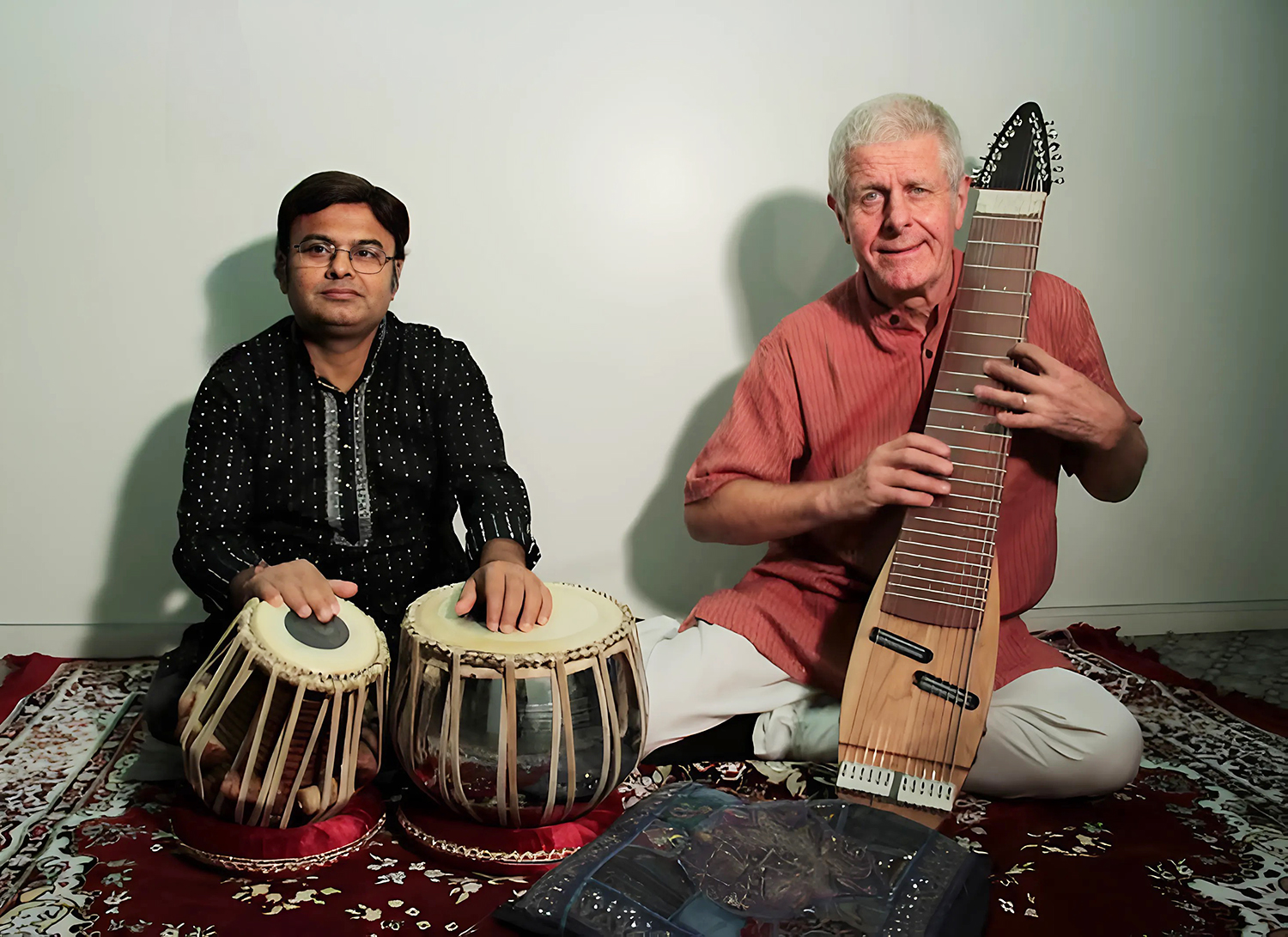 Sandip Banerjee and Daniel Schell | Photo: Clic Music
Sandip Banerjee and Daniel Schell | Photo: Clic Music
Tell me about your drive to establish the Sangit Academy of Classical Indian Music and its mission.
The school currently has 20-25 students, and I have been running schools like this for several decades. The Sangit Academy is a totally private school. I tried to create a public school but funding it was too difficult.
In recent times, I’ve invited some great Indian musicians such as the tabla player Sandip Banerjee and the bansuri player Harsh Wardhan to become a part of it, and it continues to grow slowly. The problem is, there isn’t a large-scale interest in Indian classical music training here, compared to say, the Ali Akbar College of Music in the San Francisco Bay Area.
The decision to create the school goes back to that Ravi Shankar concert at Brussels University. He was performing with Allah Rakha on tabla. I had never heard of them before, and it was just before Shankar performed with The Beatles.
In the late ‘60s, Holland gave citizenship to more than 10,000 people from India. So, there was a large presence here. I got to meet a lot of people interested in Indian music, including musicians and composers. So, I thought, “Why don’t we create an Indian music school in Brussels?”
Initially, we would invite famous musicians who came through Brussels to take part in the school, such as the vocalist Pandit Jasraj and the sitarist Ashok Pathak. So, we had some real masters involved. There’s no better way to learn the music than to work with the masters. The school grew from there.
I have also written or co-written several books on Indian classical music since establishing the school, including The Practice of Indian Music, The Pandit Jasraj Songbook, The Harsh Wardahn Bansuri, and The Sandip Banerjee Tabla.
The Karo Trio’s most recent album is Key of All Secrets. Describe the unique approach to Indian music it explores.
The name refers to the Philosopher's Stone, a substance believed to be the key to achieving immortality, transforming base metals into gold, and unlocking the secrets of the universe.
The trio uses the Karo technique. And on this album, we are using very slow tempos, related to life in Indian villages. We are exploring those tempos by mixing modes. We aren’t using strictly Indian modes, but rather moving modes harmonized through Karo techniques. On this album, every beat can be divided into more parts.
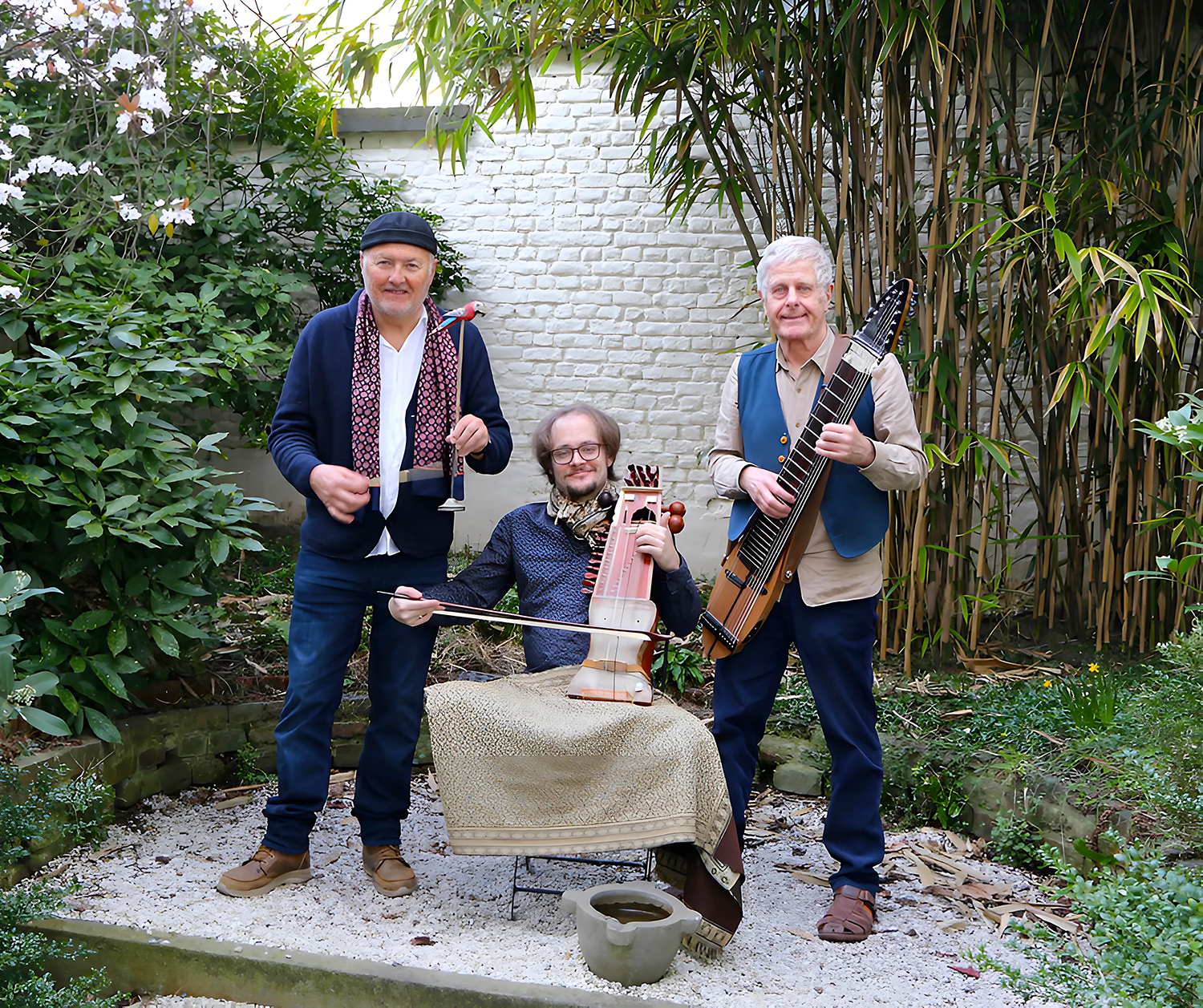 The Karo Trio: Jean-François Jones Jacob, Wim de Winter, and Daniel Schell | Photo: Clic Music
The Karo Trio: Jean-François Jones Jacob, Wim de Winter, and Daniel Schell | Photo: Clic Music
You brought the Karo Trio to India in 2002. How did Indian audiences respond to it?
The Indian Council for Cultural Relations invited us, and I thought I was dreaming. A minister’s car arrived to pick us up and we were staying in posh hotels. Hundreds of people came to our concerts and people really liked that we did.
I remember one concert we did at Rabindra Bharati University in Kolkata. All the pandits were sitting in the first row. At first, they were puzzled by the different harmonies we were using, but they appreciated them after experiencing them. It was a really great experience.
I have gone to India many times since and played in different places around the country and they have been great experiences. In 2011, I received a grant for artistic achievement from the Indian Government through the Indian Embassy of Brussels, which was also wonderful.
What does the future hold for the Karo Trio?
I think we may not stay within these extremely slow tempos and continue to develop the modal side of the music. I’m now working with a very old language called LISP from the 1950s. It’s a functional programming language known for its powerful symbolic data processing capabilities. So, it’s all about manipulating symbols, including the symbolic element of music. I am using LISP, together with my colleague Ola Rinta-Koski, to develop new ways of working within optimality for the trio.
You’ve composed several operas. Provide some insight into your key pieces.
My interest in opera first emerged through Cos. The last two Cos albums, Swiß Chalet and Pasiones, were little operas with a libretto.
My first full-length opera was Alpe della Luna, which is about the story of a rock star. I’m a fan of Wagner’s music. He also used optimality in his work. He was always joining intricate elements together and using that to advance the music. And you will hear that influence on it. It was never performed, but it was an important experience for me to create.
I then wrote three operas with Amelie Nothomb, a famous author who writes in a kind of theatrical form. I then wrote two operas inspired by Christian Dotremont’s logograms, which is a sort of abstract calligraphy. He started the Cobra avant-art group in Europe and was a very important presence.
I’m now working on an opera based on the work of Jack Kerouac called Dharma in Big Sur. It’s very interesting because his poetic prose was very much improvised, like jazz. I’ve met Kerouac’s family, and I’ve obtained the rights to do it. I’m three quarters of the way through it. I’m not trying to write a bebop piece, because that doesn’t make any sense. I want to combine what Kerouac did with operatic elements. Kerouac himself liked jazz of course, but also opera and progressive music. So, there is a real opportunity to create something that reflects all of that.
I love working on opera because composing for the voice is fascinating. I enjoy directing singers and exploring new possibilities for them. For instance, they don’t always have to sing melodies in a standard way. It’s possible to join melodies that create parsimonious vocal approaches.
A brilliant mathematician-musician in the community that we call MAMuTh named Richard Cohn created this approach. He analyzed a concept called voice leading parsimony that’s used in composition. It’s a seminal method that I follow in my work.
In 2003, you co-helmed a recombinant project called Oratorio Ishango, bringing together many influences within an African framework. Explore its creation.
A producer named Pascal Noël called me one day. He knew I was into Indian music and was looking for someone who could compose music about the Ishango bone, which is a 20,000-year-old bone that was discovered in East Africa on the border of Congo. It’s considered a mathematical device that goes back to the Upper Paleolithic era. It has ordered engravings on it, such as prime numbers, that suggest it was used to perform mathematical procedures.
Pascal asked me if I could write an opera about that. I was very interested, but I said I’m not going to create music using the numbers on the stone. For instance, we could have established a direct correspondence between the mathematics of the bone and the music. We could have used groups of 5 bars, followed by 7 and 11, establishing a direct mapping between the bars of the bones and the bars of the music. But that seemed like a childish thing to do and we avoided it.
The approach we used, and found more interesting, was to consider that the bone is a sign of academic intelligence in early Africa, and that similar signs could be found in the memoria humana, such as traditional stories and tales. I wanted the music to reflect the wisdom, ideas, and themes of Africa’s wonderful poets.
So, I contacted some poets from Zimbabwe, South Africa, and other parts of Africa. I asked them to contribute traditional poems and tales. I worked principally with Titinga Pacere from Burkina Faso, who collected some beautiful traditional stories about animals for me. And I started to put those to music, together with Chris Joris and Ange Nawasadio, in addition to using some musical themes from Peter Gabriel.
Oratorio Ishango brings together many wonderful musicians, including an African choir, African percussionists, a choir, and jazz musicians. The combination is very interesting. It’s about the coexistence of traditional and modern music.
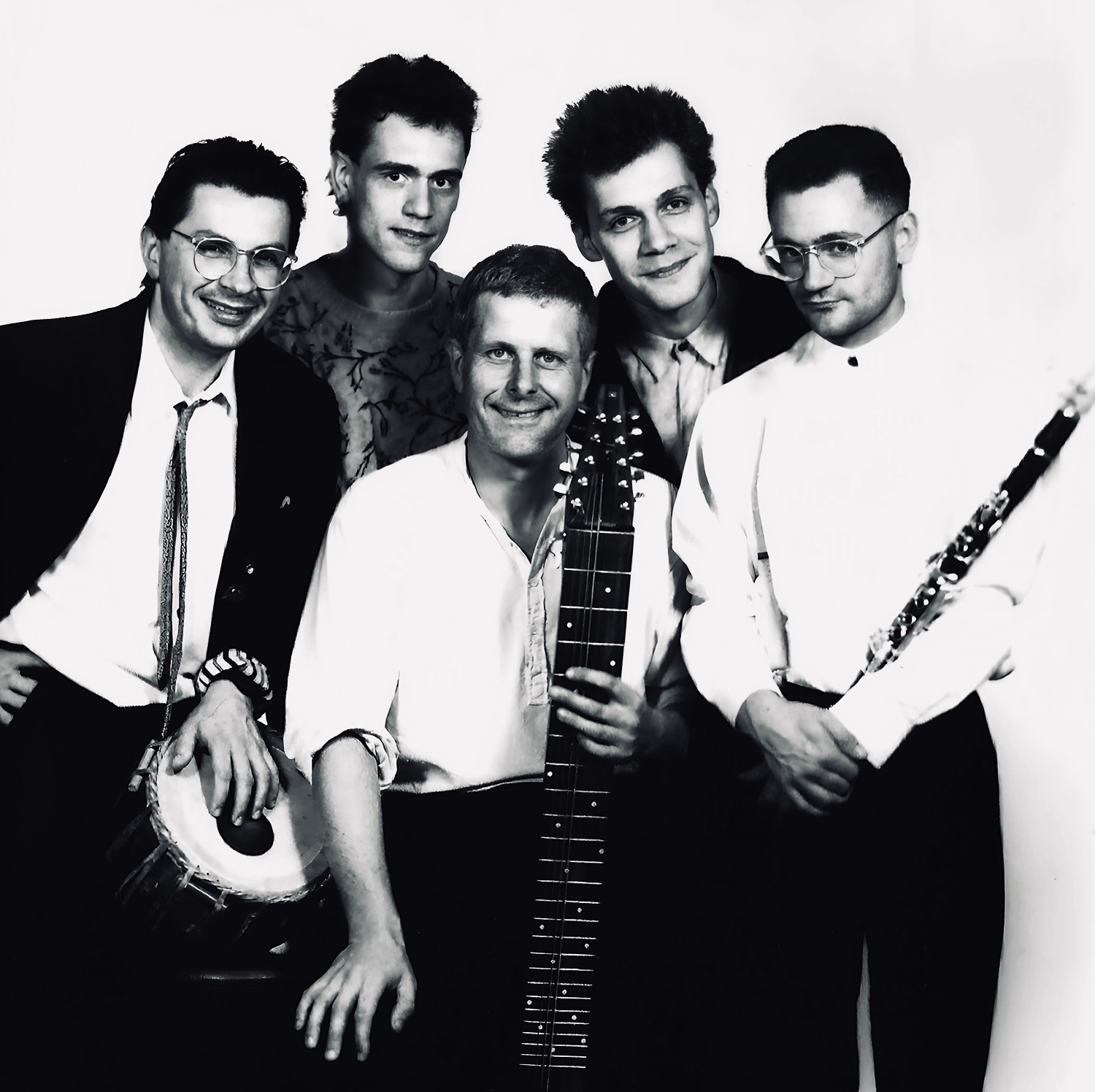 The Karo Ensemble, 1990: Pierre Narciss, Jan Kuijken, Daniel Schell, Jean-Luc Plouvier, and Dirk Descheemaeker | Photo: Verhasselt/Clic Music
The Karo Ensemble, 1990: Pierre Narciss, Jan Kuijken, Daniel Schell, Jean-Luc Plouvier, and Dirk Descheemaeker | Photo: Verhasselt/Clic Music
How do you look back at your recordings for Crammed Discs: If Windows They Have and The Secret of BWLCH?
If Windows They Have from 1986 was a kind of hit. It got some great media attention, and we toured it for six months. It opened up a lot of opportunities for us, and perhaps it was my mistake that I didn’t choose to follow it up with something similar. But I never do the same thing twice. So, the second record for Crammed, The Secret of BWLCH from 1990, was something very different. Maybe it was a bit more complicated to understand.
If Windows They Have is essentially contemporary classical music. It had a very direct effect on listeners. It still reflects some of the Karo rules in how it was produced. Some people referred to it as minimalist music, but I felt it wasn’t related to Philip Glass or Steve Reich. Rather, it was closer to what Terry Riley would do.
For If Windows They Have, if a piece was written in 7/4, it would remain in 7/4 throughout. But for The Secret of BWLCH, I would do things like using 26-beat patterns. The title track even had a 200-bar cycle in it. I was using seminal melodies, including Gregorian melodies that were put against metrics. It also reflected Indian classical models such as ragas, in that the work was about very long progressions.
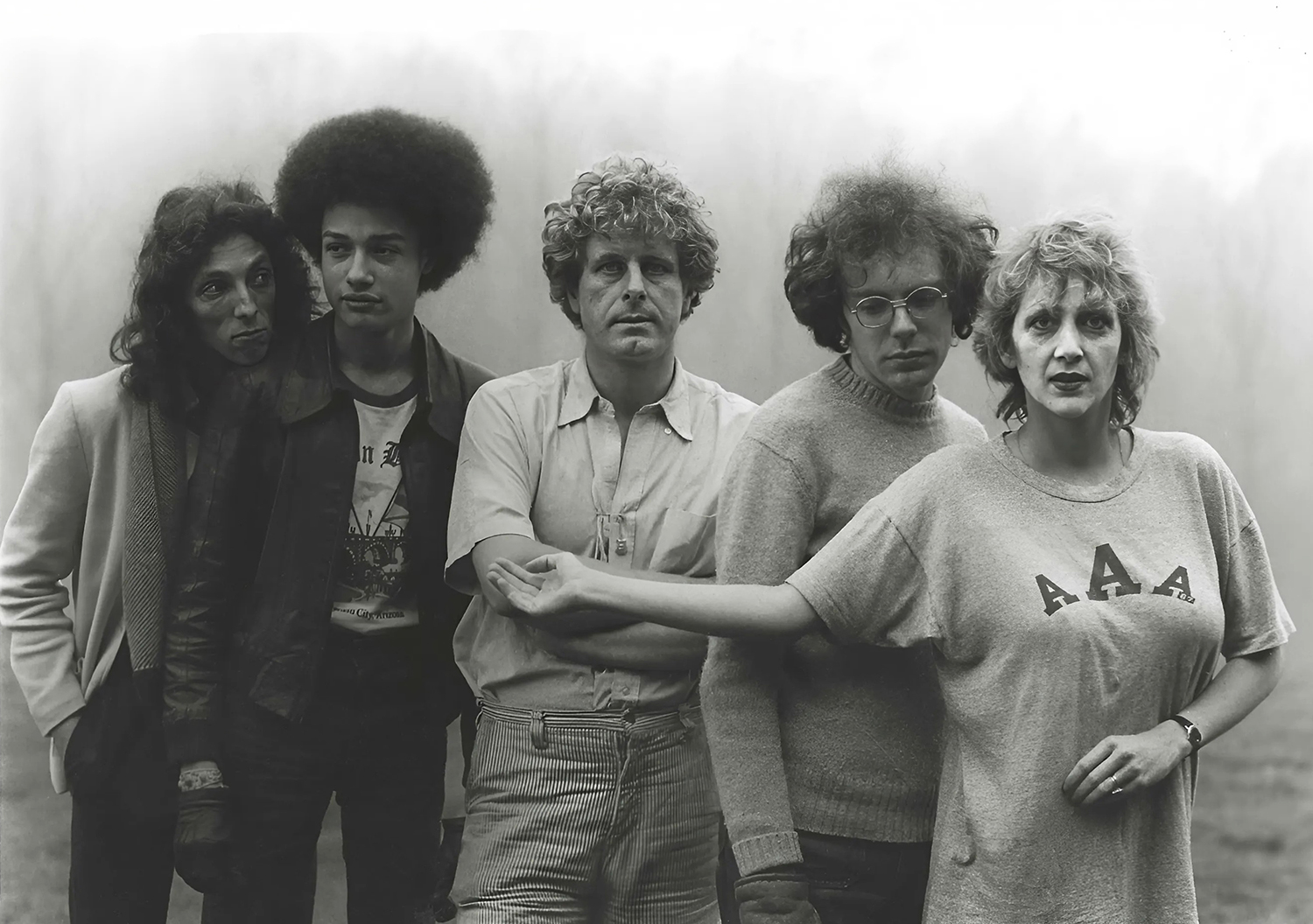 Cos, 1978: Alain Goutier, Philippe Aalert, Daniel Schell, Charles Loos, and Pascale Son | Photo: Bruni Meya
Cos, 1978: Alain Goutier, Philippe Aalert, Daniel Schell, Charles Loos, and Pascale Son | Photo: Bruni Meya
Reflect on your work with Cos and the many directions it took across its existence.
We were very much a progressive rock band. I loved working in that form because it can be wildly, incredibly diverse, and unpredictable. We also had absolutely wonderful musicians in it.
You could compare us to Can or King Crimson during that period between 1974-1983. Can, in fact, was a big influence on it. Cos was part of a giant explosion in creative music across rock and pop music in Belgium.
Our last album, Pasiones, is a great record, and the best one we made. It’s a metrically-advanced album that only sophisticated musicians could contribute to. It goes into all kinds of different meters and harmonies. It took us a long time to create that music.
You’ll hear many kinds of music in Cos. There’s the influence of German melodies and electronics, but also music from all over the world. Cos would take traditions from everywhere and incorporate what’s good and interesting from them.
Our album Postaeolian Train Robbery had a jazz-rock influence as well with heavy drumming. Swiß Chalet was a kind of opera. And by the time you get to our final EP, Hotel Atlantic, you’ll even hear some disco elements. How could we resist the influence of Saturday Night Fever and the Bee Gees? So, we took from that world, too.
Cos also reflects the fact that I was studying composition and harmony. It had avant influences from conservatory training. I was always trying to combine composition from the simple to the elaborate in Cos. I loved the band.
For a time, 40 years ago, Cos was known everywhere. We even played in San Francisco once, and I remember one of the members of The Residents attended and shouted “Are you The Residents?’” I was told they always did that at concerts they attended. It was a fantastic experience to perform with Cos.
Egmont and the Ff Boom, your 1978 duo album with Dick Annegarn, is another key entry in your discography. Discuss the elements it brought together.
It started with exploring music from the Renaissance and shifted into big rock polyphony. It uses the process of recycling and moves through the times. It tells the story of the historical figure Count Egmont, while exploring the evolution of the oud. You’ll hear Franco-Flemish polyphony throughout it. It’s kind of a historical poly-cultural album.
The music is related to that which the musicians of the low-countries—Belgium, the Netherlands, and Luxembourg—made during the Renaissance when they were visiting South Europa. It’s also a study of Indo-European and flamenco influences.
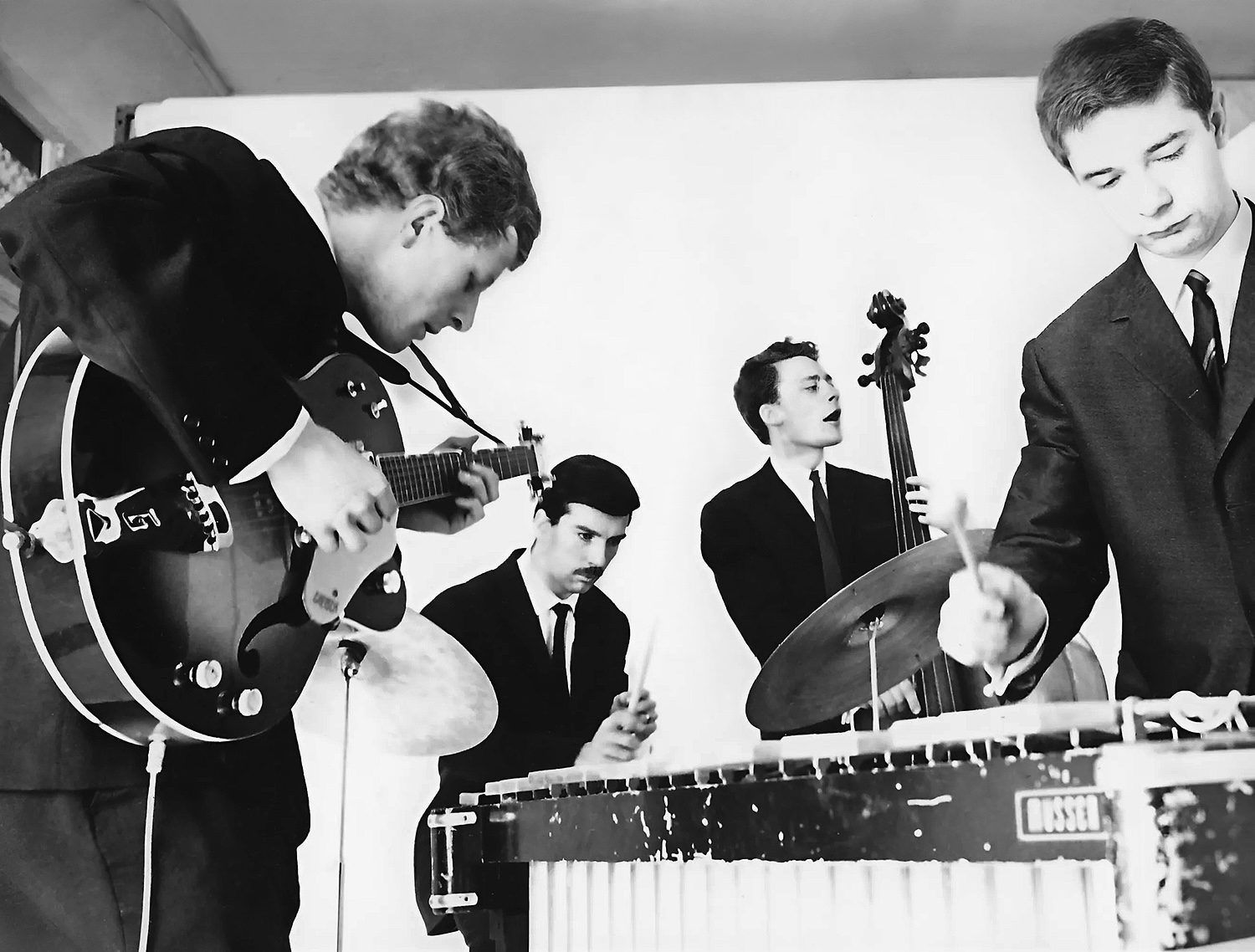 Classroom, 1968: Daniel Schell, Guy de Bruyne, Martial van Hille, and Jean-Pierre Destree | Photo: Patricia Matthieu-Lippens
Classroom, 1968: Daniel Schell, Guy de Bruyne, Martial van Hille, and Jean-Pierre Destree | Photo: Patricia Matthieu-Lippens
Two archival projects from your earliest days as a recording artist were recently released: Classroom’s self-titled album and Brussels Art Quintet’s “Voir/Four Paul S.” single. Talk about those days and how that work eventually led to what you did with Cos.
Brussels Art Quintet was a group I had for a short time in 1969 when I was attending Brussels University. I was a guitar player in it. I was influenced by Paul Bley, Ornette Coleman, and Tony Scott at the time. It was very avant-garde music, but it felt very natural for us. It included members of The Babs Robert Quartet and people who would become involved in Cos. The 7” single Finders Keepers released in 2019 are the first recordings ever released by it.
Next came Classroom, which existed from 1969-1974, before transforming into Cos. It included Pascale Son and Charles Loos, who went on to Cos with me. There’s only the one album which was finally issued in 2023 by Finders Keepers. We wanted to do something punchier and rock-oriented. And this eventually led to Cos forming.
The band name Cos was created by taking three letters out of the name Classroom. It’s also a word that exists in all languages of the planet.
It’s fantastic what Finders Keepers and Wah-Wah Records are doing with the reissues of the Cos, Brussels Art Quintet, and Classroom records, and my earlier solo work. More and more people keep discovering Cos as a result of these reissues. Finders Keepers even did a 7” single of “Mein Maschine Ist Schön." It was originally from the 1978 Babel album. Chanel heard it and used it in a film because of the reissue, which was fantastic. I’m very happy they are putting all this music out again.
What motivates you to keep evolving and exploring as a musician?
I absolutely always have to keep advancing. I’m always curious about developing instruments like my tap-guitar. I now have a fretless one, so I’m learning how to incorporate that into what I do. It’s very interesting to use in ragas. I’m also tempted to buy some new synthesizers to find new sounds to work with.
I also learn through teaching. I love to help people discover and play new music. I believe this helps the world in a positive way, when there are so many terrible things happening across wars and politics. In my own way, I am trying to communicate peace and democracy through music.
Also, Belgian people are individualists. Nobody’s fighting any of their neighbors. Everyone wants to be on good terms with each other. Everyone has their own way of identifying themselves and their own language, whether that’s Dutch, French, or German. There’s a real sense of Belgian creativity and inventiveness as a result. I’m very honored to be a part of that.